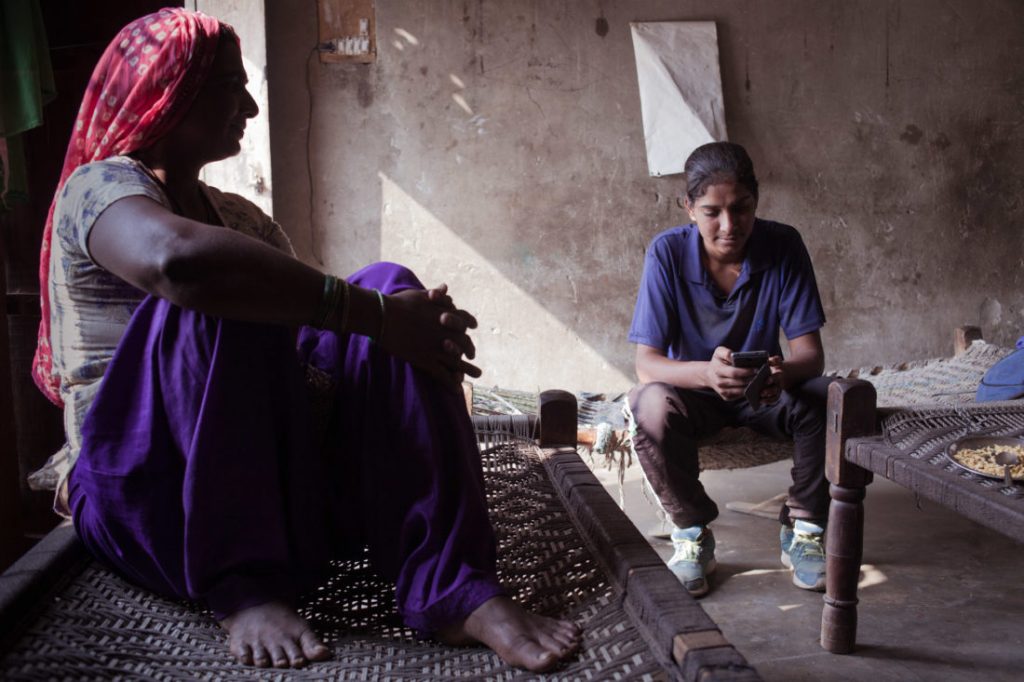Prachi Sahasrabudhe
Part 2- “Play like a girl”: Deconstructing gender roles via the lens.
The essay focuses on breaking down the binary between the masculine and the Feminine through concepts like bodies, gender, and sports. The series of works under discussion are by the contemporary photographers Karen Dias, Prarthana Singh and Uzma Mohsin as they document female athletes’ hardships and victories in male-dominated sports such as boxing, wrestling, football, and rifle shooting, among several others.
Karen Dias- ‘Play like a girl’:
Karen Dias’s project – ‘Play like a Girl’ was supported by the International Women’s Media Foundation which documented female athletes from Haryana excelling in their sports careers despite challenges posed by patriarchal mindsets in both personal and professional life.
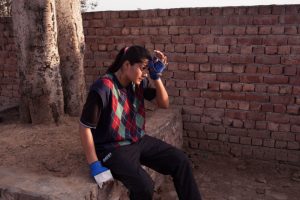
Haryana, which is notorious for caste and sexual violence against women, has the worst sex ratio in the country, with 879 females for every 1000 males, the lowest in the world. This small northern Indian state has been accused of having a higher rate of female infanticide, rape, human trafficking, and domestic violence. In contrast, a small and dispersed community of female athletes is defying stereotypes and winning international medals in sports ranging from hockey to boxing, wrestling to football and rifle shooting.
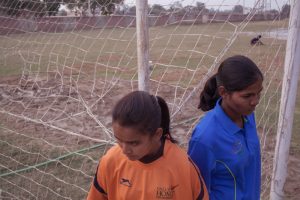
In a state where women are rarely allowed to leave the house unaccompanied and wearing ‘western clothes’ and participating in physical sports is frowned upon, Haryana’s young girls are qualifying for and winning Olympic, Commonwealth, Asian, and National Games, among other national and international competitions. However, the journey to pursuing a sport of their choice is challenging. Most of the girls come from low-income families and cannot afford the equipment, diet, and maintenance required to play professionally. Most girls cannot even imagine having access to the same psychologists or medical facilities as their Western counterparts. Despite the Haryana government’s strong push to develop sports in the state, sporting facilities are still lacking, and bureaucracy makes it difficult for some players to gain access to meal schemes, prize money, and other economic advantages. Some female athletes have even stated that the prize money for female athletes is less than that of male athletes in the same sports. Many of the players do not have access to basic facilities like restrooms or changing rooms.
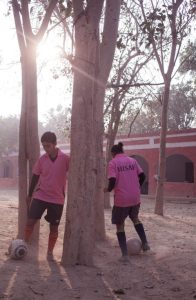
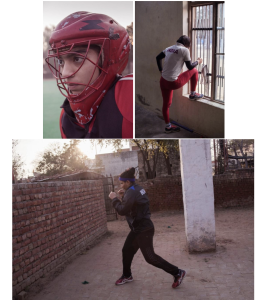
Aside from playground obstacles, the girls face patriarchy and gender-based discrimination daily. Many families are offended when their daughters wear shorts, play with boys, or participate in sports that men do. When their parents decide they must marry, most girls realise they may have to give up their athletic careers. Success as a professional player, on the other hand, brings financial freedom, accomplishment, and fame, allowing the girls to negotiate marriage later in life and help support their families. The success stories of Olympian Sakshi Malik and the Phogat sisters have motivated more girls in Haryana to participate in sports and fitness, and more families are encouraging their daughters to participate. These young sportswomen in Haryana have a long way to go, but they are paving the way and demonstrating how sport can play a significant role in empowering young women and bringing about much-needed gender equality in this state.
Prarthna Singh- ‘Champion’:
Prarthana Singh is a Bombay-based photographer who captured female athletes in northern India in her series work ‘Champion’ initiated in 2015. Prarthna’s life was always intertwined with the medium of photography since childhood. Prarthna developed an early appreciation for the narrative power of images, and by the time she was old enough to attend university, she was ready to dive deep into photography. She quickly became infatuated with the dark room and the alchemy of making pictures. She was soon encouraged to find ways to use the medium in the outside world. After graduating from the reputed Rhode Island School of Design, she spent a few years working in New York before returning to her home land. She has previously written for The New York Times, The Economist, The Wall Street Journal, FT Weekend, Wired, and The Guardian, among others, and has been commissioned by Nike, Instagram, and Uniqlo, to name a few.
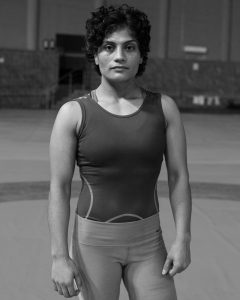
Singh’s work examines female identity in modern India via the lens of gender and nation. Her photos show India’s transition and contrast while exploring a dual paradox between feminine identity and strength. She is particularly drawn to stories that stand at the juncture of tremendous vulnerability and power. These feminine narratives are built within India’s unique traditions, balancing fragility with plenty. The beautifully lit compositions in Singh’s photographs explore concepts of female identity, with a special emphasis on gender intersecting with contemporary India’s turbulent nationalistic politics. Her photographs reflect India’s economic and political trajectory, forming a visual arc that traverses the duality of feminine vulnerability, strength, and empowerment. She presents the shifting landscape of India’s historically problematic relationship with gender, which provides for her an intriguing space to explore and delve into.
Prarthana’s photography focuses on portraiture, telling stories of vulnerability and strength. her recent project ‘Champion’, captures a series of sculptural images of professional female athletes in their respective environments. She shot most of the images in Haryana, where she recorded young women from all over the country training at a boxing camp.
Haryana has one of the worst statistics on gender, yet it is where India’s elite women athletes train. North-central India have some of the highest rates of female infanticide in the world. Government-run sports training camps are in the centre of this violence, where teenage ladies are motivated to change their fate. The striking contrast within the region – both states having some of the worst gender-related statistics, yet some of the top elite female athletes come here to train – intrigued Prarthana, culminating to a photographic project. ‘Champion’ is an ongoing series by Singh that examines the connection of gender and femininity with athletics and nation-building, a traditionally male-dominated domain.

Prarthna spent time with the aspiring champions in the camps which sparked impassioned discussions about empowerment. The girls discussed what inspired them: the desire to earn a medal for their country on an international platform; to become the next Indian champion. This was a powerful affirmation in a culture where women are assessed based on their marriageability and scorned for ambitions. Despite the challenges they face, these women athletes were determined to break barriers and inspire others. Their hard work and dedication serve as a testament to the potential of women in sports and beyond.
Uzma Mohsin’s Fellowship of the Ring- women in boxing:
‘Fellowship of the ring’ by Uzma Mohsin was first published in Tehelka News Magazine in 2008. It was exhibited as part of fete de la photo, organised by the embassy of France in India in ‘Bonjour India’ festival 2014. Uzma Mohsin is a native of Aligarh who attended the National Institute of Design, Ahmedabad, India. She utilises photography to tell tales about people, places, and their history. Her work attempts to start a debate about belonging by examining cross-cultural interactions and perspectives. Her latest shows include Female Gaze: Travels Through the Punjab & the Black Country, UK; Blast Festival, West Bromwich, UK (2019); and Ellipsis: Between Word and Picture, Jawahar Kala Kendra, India, Ephemeral: New Possibilities for Passing Images, Serendipity Arts Festival, Panjim (2018), India/Contemporary Photography and New Media Art, FotoFest Biennial, Houston (2019). She also received the Alkazi Foundation Documentary Grant (2017).
The central theme of Uzma Mohsin’s photographic series ‘Champion’ is unusual women and unusual sport. The women, who have varied backgrounds and have made boxing their sport of choice, have formed an unusual “fellowship of the ring” to overthrow this male stronghold. Women’s boxing has produced numerous world champions for India since boxing was legalised in India in 2001.The estimated number of female boxers in India is one thousand, which is astounding given how quickly the sport has developed.
The central theme of Uzma Mohsin’s photographic series ‘Champion’ is unusual women and unusual sport. The women, who have varied backgrounds and have made boxing their sport of choice, have formed an unusual “fellowship of the ring” to overthrow this male stronghold. Women’s boxing has produced numerous world champions for India since boxing was legalised in India in 2001.The estimated number of female boxers in India is one thousand, which is astounding given how quickly the sport has developed.
The photographic series by Uzma Mohsin reveals many stories in the training camps. The states with the most female boxers are Manipur, Haryana, and Kerala. Most of the females begin while they are young. Boxing in addition to fitness, needs tough training and discipline.
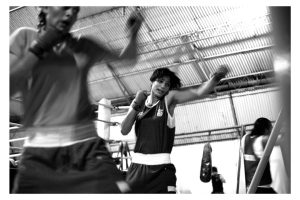
www.uzmamohsin.com
Despite the lack of space for girls in the boxing club, many young female boxers from India are still determined to pursue their dreams of becoming national champions. With the help of each other and training camps like the Asian championship selection camp, talented boxers like Kalpana Sharma, Kavita, and Sarita Devi continue to strive for success in the sport.
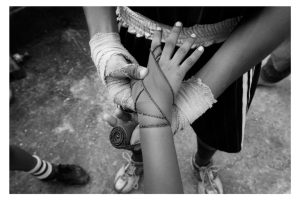
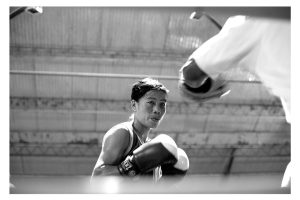
A heroine is required in every sports narrative. Mary Kom, a four-time World Champion, is the obvious pick. She is now known as the face of Indian women’s boxing. Her parents had no idea she was boxing until she won the State Championships. With her Manipur police job and minor subsidies, she skated her way out of poverty and won a bronze medal at the London Olympics in 2012.
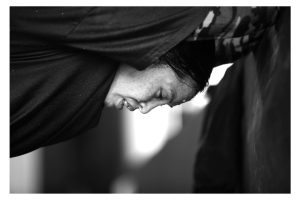
Despite facing social stigma and lack of support, these women have defied odds and proved their mettle in the sport. The success of these women boxers has not only brought recognition to the sport but has also inspired many young girls to take up boxing as a career option. Most women’s greatest triumphs have gone unnoticed in a nation where subpar play in other sports attracts a devoted following. Despite this, female boxers have battled and continue to battle their way to the top.
References:
- www.karendiasphotography.com
- Jyni Ong, 13 May 2020, “I look for ways to distil the complexities of heartbreak and joy: Prarthna Singh reflects on gender and politics in India today”, It is Nice That,https://www.itsnicethat.com/articles/prarthna-singh-photography-130520
- Prarthana Singh, “Champion,2015-ongoing”, https://fire-cracker.org/2021/12/prarthna-singh/
- Tehelka news magazine,2008, Volume 5, Issue 38 , http://tehelka.com/
- www.uzmamohsin.com/stories/fellowship-of-the-ring
- Uzma Mohsin, 1st May 2013, “Fellowship of the ring”, Visual Narratives India, Galli, https://www.galli.in/2013/05/fellowship-of-the-ring-uzma-mohsin.html?189db0&189db0
- Uzma Mohsin, “A diminishing Line”,http://www.vasa-project.com/gallery/kaur/art- statement-mohsin.php

